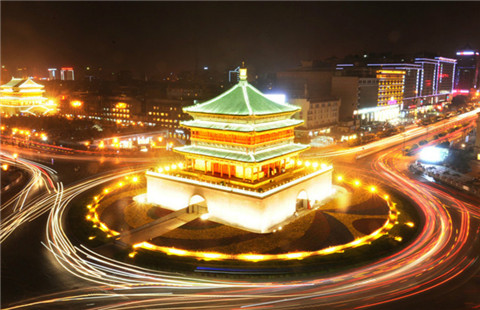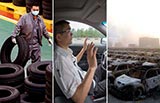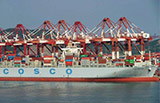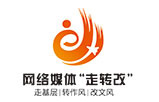China's strategic economic planning worth studying in LatAm, says ECLAC
(Xinhua) Updated: 2016-05-14 13:39SANTIAGO - China's strategic economic planning, including its decision to tackle urbanization head-on, sets an example for Latin America, according to the head of the Economic Commission for Latin America and the Caribbean (ECLAC).
"The interesting thing about China's economic model is that it has a strategic medium- and long-term vision of the country, which allows its progressive change, and from which we are learning," ECLAC Executive Secretary Alicia Barcena told Xinhua in an interview on Friday.
"We analyze China's economic development a lot, because it is undergoing an interesting process through ongoing structural reforms," said Barcena.
Over the past five to seven years, China has bought large quantities of iron and copper in the international market, and it is "preparing for greater industrialization in sectors with high technological and knowledge content," said Barcena.
"China has known very well how to make the most of such opportunities and today it is the largest producer of steel, bigger than Europe and Latin America, both of which had significant steel production," she said.
Many of the transformations China has undergone are changes that ECLAC would like to see in Latin America, so analyzing this process is conducive to the development of countries in the region, she said.
China, for example, is changing its investment- and export-led growth model and trying to position itself well in global manufacturing markets, while working to raise educational standards, all challenges that Latin America is struggling to meet.
"Perhaps the most important issue facing China is the movement of people from rural to urban areas," Barcena said, adding that "urbanization is a huge challenge and the authorities have taken it seriously."
ECLAC is set to hold its 36th session in Mexico City on May 23-27, where members will discuss "Horizons 2030: Equality at the center of sustainable development," a document aimed at outlining a regional development strategy for the next 15 years.
The document underscores China's national capacity for innovation, noting the fact that "China used to represent 2 percent of world patents, but has succeeded in reaching 35 percent, while Latin America has remained at 2 percent since 1990," Barcena said.
Another accomplishment China has obtained is its move away from motorized transport, Barcena said.
"The development of rail transport, which is more sustainable than motorize transport, confirms that country's strategic vision," she said.
Besides, China's strategic planning is not limited to its domestic affairs, the official said, adding that the country put forward several key initiatives, such as the creation of the Asian Infrastructure Investment Bank and the promotion of the Belt and Road Initiative, enhancing regional connectivity and prosperity through international cooperation.
The Belt and Road Initiative, which comprises the Silk Road Economic Belt and the 21st Century Maritime Silk Road, was announced in 2013 by Chinese President Xi Jinping. The aim is to build a trade and infrastructure network connecting Asia with Europe and Africa along the ancient Silk Road.
"That's why we believe the role China is playing is very important," Barcena said.
- China requests consultations with US over anti-subsidy duties
- China emerges top trading partner for key UAE port free zone
- China-Arab forum paves way for further economic, political cooperation
- Chinese passengers at Helsinki Airport grow by 50% in 2015
- China's service outsourcing continues to grow in first four months
- Shanghai to build more free charging posts for electric cars
- China requests consultations with US over anti-subsidy duties
- S. Africa, China to build industrial park to boost jewelry trade
- China emerges top trading partner for key UAE port free zone
- China-Arab forum paves way for further economic, political cooperation
- Chinese passengers at Helsinki Airport grow by 50% in 2015
- China's service outsourcing continues to grow in first four months
- China approves 9 new IPOs

















